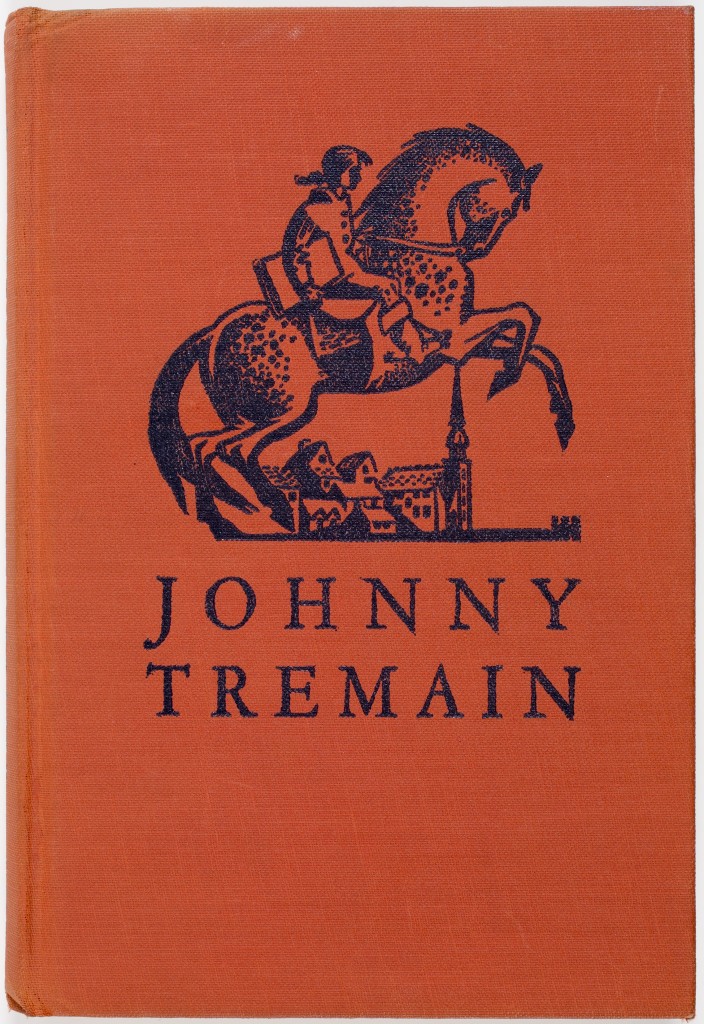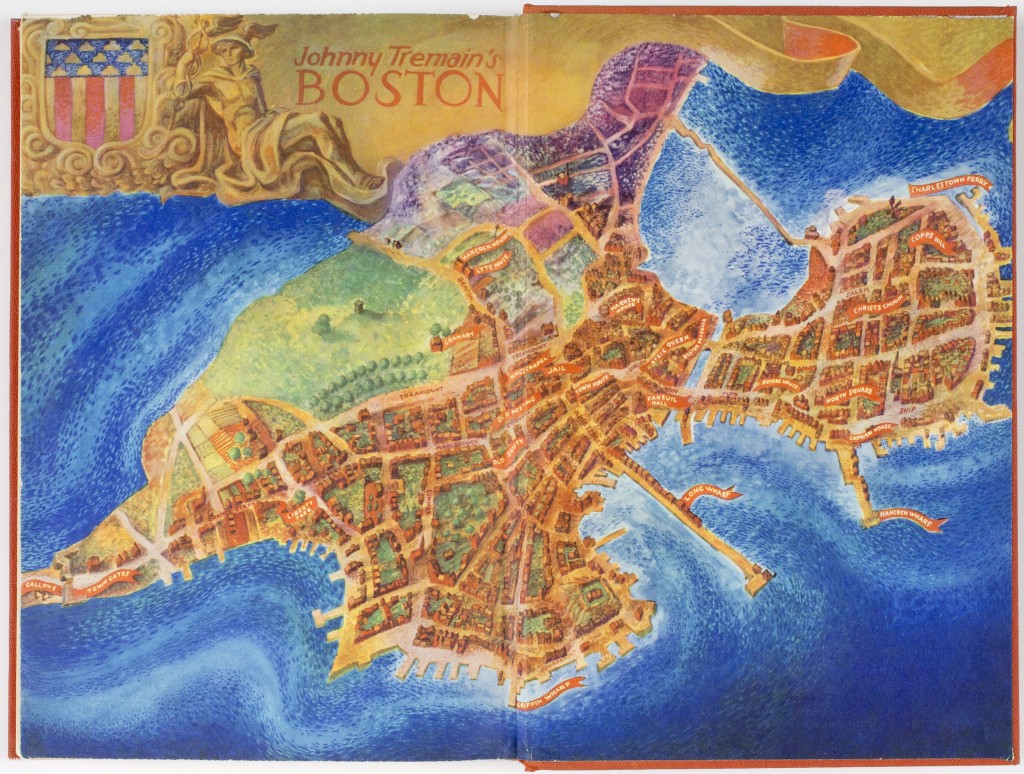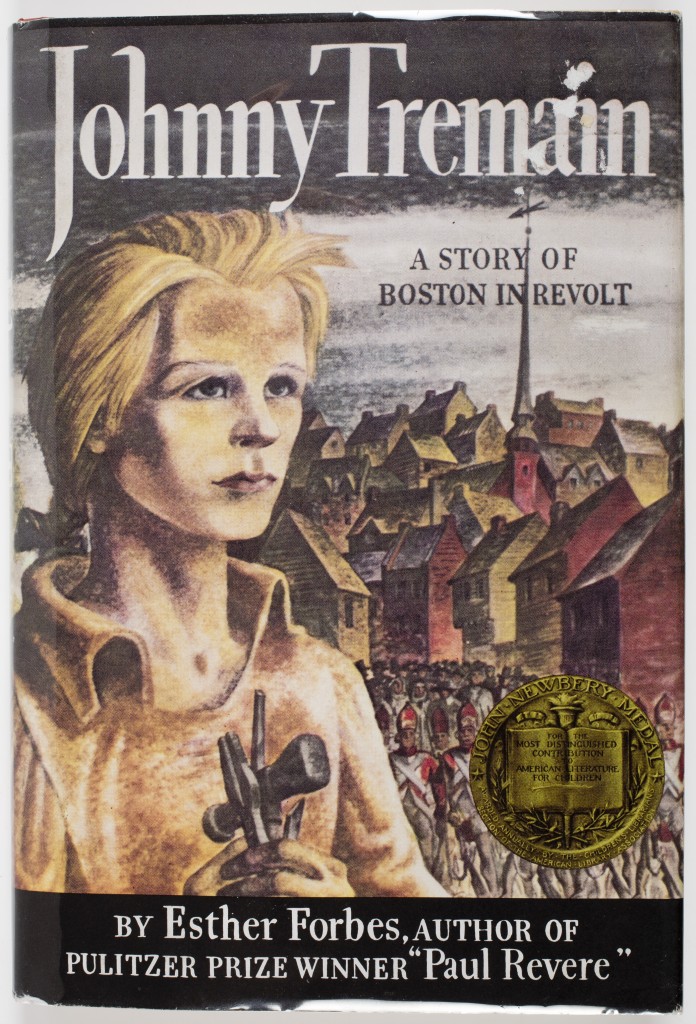Editor’s note: In a twist that follows up on Jackie Penny’s account of reading pre-1900 fiction to her children, retired AAS director of book publication Caroline F. Sloat turned to her ten-year-old grandson for an enthusiastic recommendation of Esther Forbes’s Johnny Tremain.
Our bags were packed and we were ready to leave for the airport when Henry chose to ask about Johnny Tremain. He had read it before school closed for the summer and was captivated. My grandson usually stops reading a book when “something bad” happens to the hero, but the injury to Johnny’s hand was an exception. In fact, Henry even thinks the book needs a sequel.

His comments begged further discussion, but then, alas, was not the time. I knew it would be a few months before I would see him again and, and as full as his days are, I wondered how much he would remember. A lot it turned out, and he was eager to talk. He began by saying that he liked the way the author “blended an invented story into a real story.” The result “made sense” to him because it was a way to learn a lot about the time in which it took place, one that he considered important. He particularly liked the way the plot revolved around more than Johnny’s accident. In his experience with fiction he thought that many writers would have ended the story there. “Instead,” the author wrote “the extra section” that was “really long and you learn a lot more than you expected.”

Nuances were not lost on him either: “most people would think that Americans only wanted independence and the British only wanted to keep the colonies. But that’s not true because a few Americans really wanted the British to keep ruling and some of the British wanted America to be separate. Sometimes people think that the United States already had a big military, but they didn’t and so they had to train their own soldiers.”
Esther Forbes might be pleased to know that reading the book was a “fun way” for Henry to explore Boston from his Seattle classroom. Boston came alive as Johnny “carried mail for money and delivered letters as a spy.” He also enjoyed reading about working in the ships and how to get around Johnny’s Boston and felt it was important to learn about such topics as the Boston Tea Party and Paul Revere’s Ride, but—and here comes the critique that Forbes might not find as gratifying: “I also noticed that the book didn’t have a really good ending. You need a second book. Johnny wanted to go into the army and you need to teach about life in the army and learn more about the whole revolution.”

That said, Henry reported that the book started a “Revolutionary War craze” in Mr. A.’s classroom. The kids watched the 1957 Disney Johnny Tremain movie and found other books. Over the summer Henry himself was able to visit Mystic Seaport to see old ships and Old Sturbridge Village, which seemed to him a “lot like the outskirts of Boston.” The “blacksmith and the tin shop also give you the idea of silversmithing and the printing office and houses also help you learn about what life was like for Johnny. “

Henry summed up our conversation by observing that the book has a lot of facts for kids who don’t like to read nonfiction on their own and was a “good way to sneak them in.” As Henry’s grandmother, I would say it was a good way of sneaking fiction into his usual diet of nonfiction by creating a character and situation that he found completely credible and engaging.
Seventy years after Forbes won the Newbery Medal for this book—a product of her creative imagination and skillful transformation of archival research at the American Antiquarian Society—it still resonates with young people. Johnny Tremain will be the subject of a Hands-On History Workshop to be offered by the Society on Saturday, May 10, 2014, and a portion of the day will feature discussion about the use of the novel in the classroom. If you are a teacher, take it from Henry: “it adds to your knowledge and it’s nice to read.” And if you’re an adult who hasn’t read it recently, it’s still in print (or available for download) and a wonderful glimpse of some of the best research and writing to emerge from “under the generous dome.”

2 thoughts on “A Young Reader’s Appreciation for Johnny Tremain”